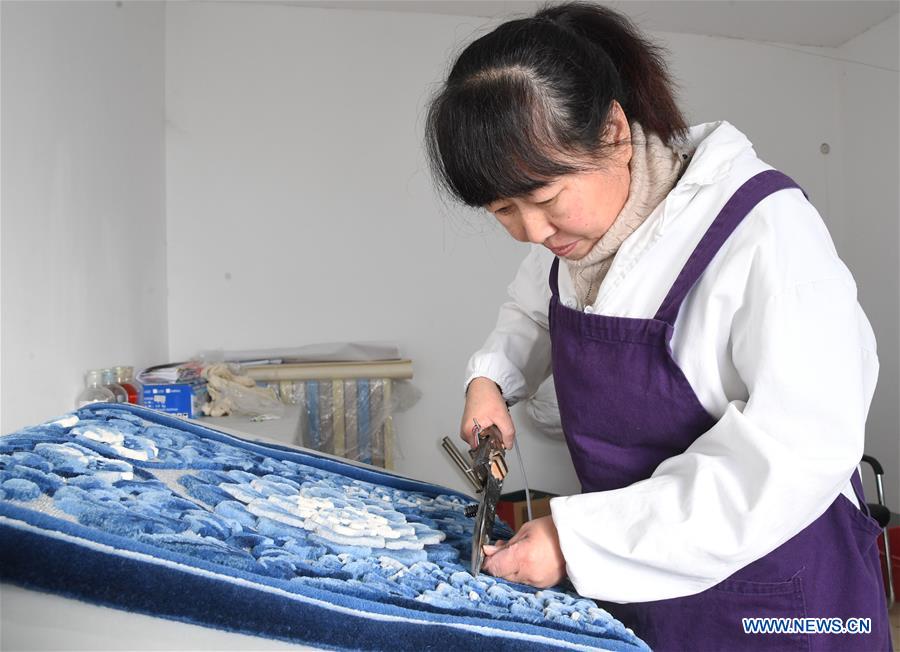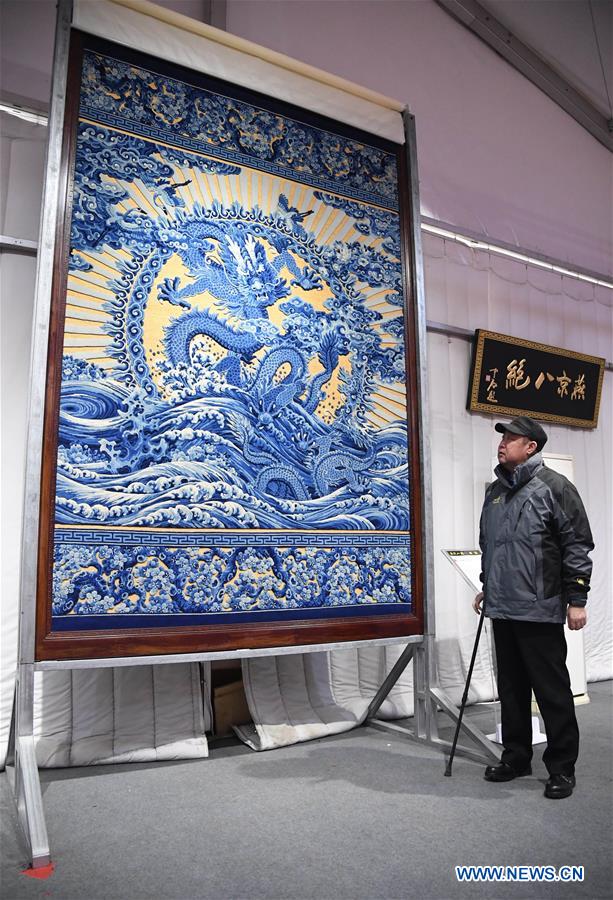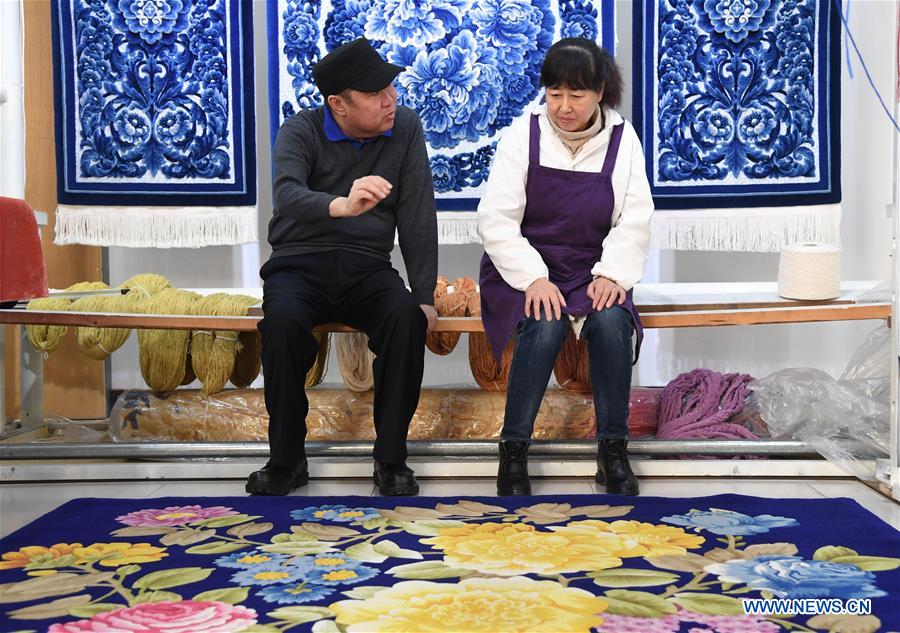Artist establishes studio to inherit, develop handicraft of Palace Carpet making
Xinhua
1576766255000

Wu Jianmei, a Palace Carpet craftwoman, weaves a carpet at Xue Qing's studio in Beijing, capital of China, Dec. 12, 2019. Carpet making has a history of more than 2,000 years in China. Palace Carpet was born in Yuan Dynasty (1271-1368) as it was recognized and accepted by more and more imperial families and gradually became a royal necessity. The handicraft of Palace Carpet making was added to the list of the city-level intangible cultural heritage of Beijing in 2008 and recognized as a national intangible cultural heritage two years later. Xue Qing has been learning and making the Palace Carpet for more than 30 years. In an effort to inherit and develop this traditional handicraft, he established a carpet studio of his own in the year of 2016. Xue Qing hopes he can create more carpet works which go with the modern trend, drawing more young people to the work of carpet making, inheritance and protection. (Photos: Xinhua)

Jiang Aihua prepares thread for carpet making at Xue Qing's studio in Beijing, capital of China, Dec. 12, 2019. Carpet making has a history of more than 2,000 years in China. Palace Carpet was born in Yuan Dynasty (1271-1368) as it was recognized and accepted by more and more imperial families and gradually became a royal necessity. The handicraft of Palace Carpet making was added to the list of the city-level intangible cultural heritage of Beijing in 2008 and recognized as a national intangible cultural heritage two years later. Xue Qing has been learning and making the Palace Carpet for more than 30 years. In an effort to inherit and develop this traditional handicraft, he established a carpet studio of his own in the year of 2016. Xue Qing hopes he can create more carpet works which go with the modern trend, drawing more young people to the work of carpet making, inheritance and protection.

Wu Jianmei, a Palace Carpet craftwoman, makes a carpet at Xue Qing's studio in Beijing, capital of China, Dec. 12, 2019. Carpet making has a history of more than 2,000 years in China. Palace Carpet was born in Yuan Dynasty (1271-1368) as it was recognized and accepted by more and more imperial families and gradually became a royal necessity. The handicraft of Palace Carpet making was added to the list of the city-level intangible cultural heritage of Beijing in 2008 and recognized as a national intangible cultural heritage two years later. Xue Qing has been learning and making the Palace Carpet for more than 30 years. In an effort to inherit and develop this traditional handicraft, he established a carpet studio of his own in the year of 2016. Xue Qing hopes he can create more carpet works which go with the modern trend, drawing more young people to the work of carpet making, inheritance and protection.

Xue Qing, a Palace Carpet artist, watches a carpet work designed with his father at his studio in Beijing, capital of China, Dec. 12, 2019. Carpet making has a history of more than 2,000 years in China. Palace Carpet was born in Yuan Dynasty (1271-1368) as it was recognized and accepted by more and more imperial families and gradually became a royal necessity. The handicraft of Palace Carpet making was added to the list of the city-level intangible cultural heritage of Beijing in 2008 and recognized as a national intangible cultural heritage two years later. Xue Qing has been learning and making the Palace Carpet for more than 30 years. In an effort to inherit and develop this traditional handicraft, he established a carpet studio of his own in the year of 2016. Xue Qing hopes he can create more carpet works which go with the modern trend, drawing more young people to the work of carpet making, inheritance and protection.

Xue Qing (L), a Palace Carpet artist, communicates with his colleague Wu Jianmei at his studio in Beijing, capital of China, Dec. 12, 2019. Carpet making has a history of more than 2,000 years in China. Palace Carpet was born in Yuan Dynasty (1271-1368) as it was recognized and accepted by more and more imperial families and gradually became a royal necessity. The handicraft of Palace Carpet making was added to the list of the city-level intangible cultural heritage of Beijing in 2008 and recognized as a national intangible cultural heritage two years later. Xue Qing has been learning and making the Palace Carpet for more than 30 years. In an effort to inherit and develop this traditional handicraft, he established a carpet studio of his own in the year of 2016. Xue Qing hopes he can create more carpet works which go with the modern trend, drawing more young people to the work of carpet making, inheritance and protection.


